
We said, in our introduction document, that we were interested, in the organisational structure, of systems, and the way, that such structures may evolve. In our notation document, we described the notations, that we use to describe such structures, and to describe their evolution. We use Venn-like-diagrams, to represent organisational structures, and the Lambda notation, to characterise changes, to these structures.
This document provides one of the examples, listed in the document section, of our introduction document. It models the half hour, that elapses, between one British Prime Minister officially resigning, and his, or her, successor succeeding to the post. This transition process is believed to be sealed, by the new Prime Minister kissing the hand, of the British Monarch - so this process is referred to as Kissing-Hands.
The British constitution is unwritten and not well understood. We have made a guess, as to the situation, that pertains, in the half hour, when governing power is transferred. It is not particularly important, whether our guess is correct, or not. Our guess does give us a simple and interesting dynamic example.
It is a curious fact, that the English (and Scottish) and French constitutions evolved, in markedly different directions, in the period 1000-1400. In this period, the French had a series of 12 kings, who were all succeeded, by their eldest surviving sons, so the French monarchy and aristocracy were very stable, in their power, by 1400. In contrast, in the same period, the English (and Scottish) monarchies could scarcely have been, less stable. By the fifteenth century, England (with Wales) had developed a complex social structure, with much wealth and power, decentralised and beyond the control, of monarch, or aristocracy. The monarchies of England and Wales, Scotland, and France were faced with instability after 1400, but, probably, because of their different pre-1400 experiences, they responded in very different ways, with England and Wales, and later Scotland, decentralising power, to political, legal, religious, military, commercial, and financial bases, while France centralised power in the monarchy.
The initial evolution, of government in England and Wales, could be represented by:
In the early Saxon period, monarchical government was the only form of government, with numerous monarchs having total control, within their small realms. After the Norman invasion, the feudal system prevailed, with the monarch delegating some powers to aristocrats (effectively sub-monarchs), this was, in fact, a step backwards, as the later Saxon and Danish kings had advanced, beyond this stage.
In the few hundred years, after the Norman conquest, commerce became increasingly important, with merchants capturing an increasing proportion, of the country‘s wealth, and becoming the key source of finance, for the disputes and wars, of the monarchs and aristocrats.
Both the aristocracy and the commercial powers demanded influence, over monarchical power, and their conflicting requirements needed coordination. Hence, the gradual evolution, of a political system, comprising a monarch, supported but constrained, by a parliament.
The political system needed agencies to codify and enforce its decisions, and these were provided by the legal system (vastly extending the roles, of the clerks, in the courts of earlier kings), the services (the army and navy initially, with civil service, secret-services, militias, police and welfare-systems later). By the end of the seventeenth century, the financial systems that were needed, by the other systems (particularly the commercial systems, and the armies and navies, fighting Louis XIV), forced the English to follow the example, of the Dutch monarchy (imported as William 3 to Britain), and create financial systems, able to cope.
By the end of the Stuart period, England, with Wales, was ruled, by the Monarch, via her, or his, Privy Council, but this was heavily constrained, by the Parliament in Westminster, the Lawyers, the Bishops, the Military, and the wealthy merchants and financiers.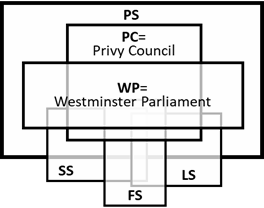
The Act of Union, of 1707, merged England, Wales, and Scotland, into Great Britain, though it did not totally merge their constitutions and legal systems. At this stage, for Great Britain, sovereignty lay with the monarch, sitting in the Privy Council. The Westminster Parliament comprised two chambers, the House of Lords, and the House of Commons. Their memberships overlapped with that, of the Privy Council.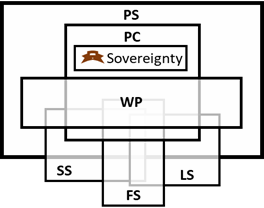
The accession, of George 1, to the joint throne, in 1714, triggered the next constitutional development. As George 1 could not speak English, he had difficulties chairing the Privy Council. He tried to use his son, and heir, George, as an interpreter, but this led to a near duel, between the son, with his poor English, and an offended member, of the Privy Council.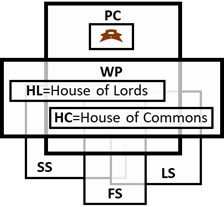
Eventually, day to day running, of the government, was delegated to a sub-committee, of the Privy Council, effectively the modern Governing Cabinet, with its Downing Street base. This was chaired by a member of the Privy Council, the Prime Minister. Initially, sovereignty hovered somewhere, between Monarch, Prime Minister and Parliament.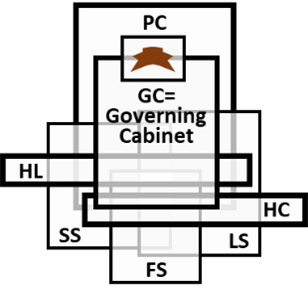
Throughout the eighteenth century and the first part of the nineteenth, most Prime Ministers and Cabinet members came from the House of Lords, but there were notable exceptions, including Walpole, Pitt the Younger, and Peel. During the later nineteenth century, power gradually moved to the House of Commons. Reform of the electoral system, during the nineteenth century, gave the House of Commons, increasing confidence and credibility.
Finally in 1910, the supremacy of the House of Commons was established, and the House of Lords was restricted to an advisory role. This supremacy was recognised, in the term ‘King or Queen in Parliament‘, which recognised that the House of Commons legislated, for the Monarch, with the Monarch merely sanctioning laws, with his or her signature. Sovereignty now lay with the House of Commons, but even some recent Prime Ministers, have resented this fact and tried to evade it. The government could give strong advice to the Commons, the Lords could recommend changes to laws, the Legal system could determine their legality, and the Services were needed to enforce laws, but the House of Commons held the sovereignty for the United Kingdom (UK). The strength of this sovereignty was dependant on the independence, from the Downing Street government, of Members of Parliament (MPs). If too many MPs rubber-stamped Downing Street decisions, sovereignty was effectively held in Downing Street. Democracy and credibility, of the House of Commons, was enhanced in the 1920s, when women were given the vote, and, finally, truly arrived in the 1950s, when graduates lost their second vote. Ultimately, sovereignty lay with the electorate, as it could periodically sack or re-elect the MPs. The sovereignty, of the UK electorate, and its House of Commons, probably reached its peak, with the retreat from Dunkirk. At that point, the UK was alone, in the world, except for its Empire.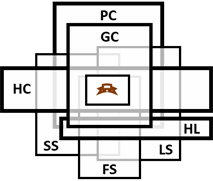
The debacle, of Suez, told the UK government, that the financial sovereignty, of the UK, was now ultimately controlled, by the US, so that the UK was effectively embedded, in a US Empire. From then on, the UK entered a world, where sovereignty was shared, between nations. Brexit did not change this, it simply swapped sovereignty, shared with a great power (EU), for sovereignty shared, via complex treaties, with a patchwork of nations. The end-result, of Brexit, will probably be reduced sovereignty, for the House of Commons and its electorate. As well as sharing sovereignty, within the global economy, the UK has been gradually devolving sovereignty, to its constituent parts.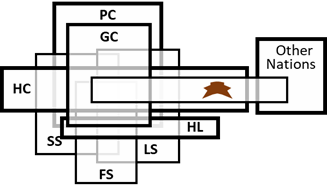
In this section, we will take the change, of UK government, in 2010, as our example. As the Governing Cabinet is a subcommittee of the Privy Council, the change of UK government can take place entirely within the Privy Council (although the new government will only survive, if it is supported, by a majority, in the House of Commons). We will focus our attention, on the part, of the previous diagram, relevant to that election. Prior to the 2010 election, the situation, could be represented by:
This has taken the previous diagram, and added the key people involved, together with their roles within the Privy Council. Each of these people will have many roles, beyond their roles in the Privy Council, so the person, when performing his or her role, in the Privy Council, is a small component of the full person. The diagram also shows Gordan Brown, as Prime Minister, the situation before the 2010 election. The Prime Minister, Gordan Brown, is shown as having powers over the Financial, Legal, and other services (through his power, to initiate laws that affect them). It shows both Gordan Brown and David Cameron, as members of the Privy Council (PCs) and Members of the House of Commons (MPs).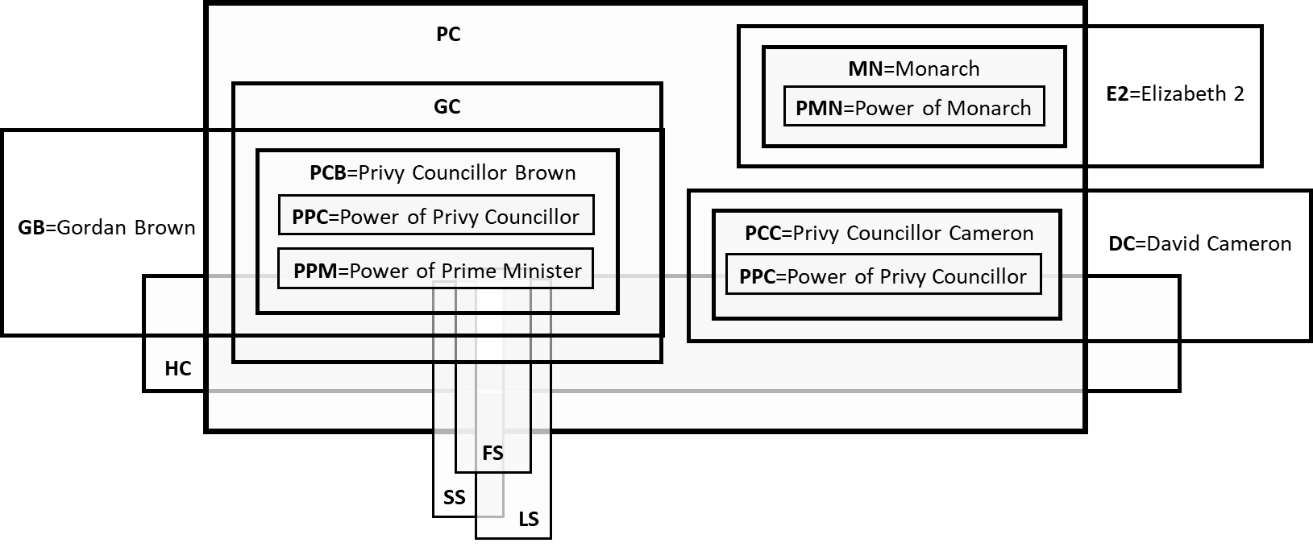
Thus, the situation, within the Privy Council, before the election, could be represented by:
We can produce a function definition, for the Change Government system, with diagrams showing the state, of the Privy Council, before and after the function, and with a textual definition of the function: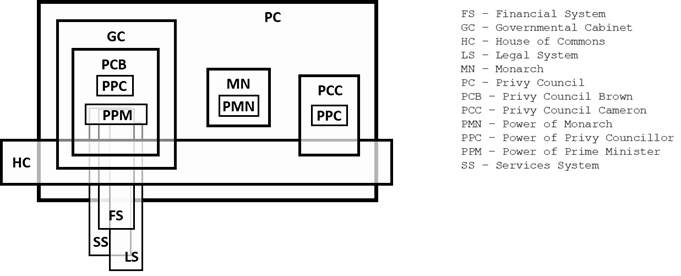
cg( CG{ GC{ PCB{PPM,PPC} }, MN{PMN}, PCC{PPC} } ) = CG{ PCB{PPC}, MN{PMN}, GC{ PCC{PPM,PPC} } }
Note, that in the above and later, the name of the function, applied to a system, is a small italic version, of the system‘s name.
The above diagram implies an instantaneous transfer, of power, between Gordan Brown and David Cameron. However, there is a half hour interregnum, between one Prime Minister visiting Buckingham Palace, to resign, and his successor arriving, at the palace, to accept the vacant post. What happens in that half-hour gap?
Remember, that a terrorist attack, or a nuclear attack, could, in theory, happen, during this gap. Also, remember, that the Governing Cabinet is disbanded, as the Prime Minister resigns. We think that, in theory, the responsibility and power, of the Prime Minister, reverts, to the chair of the Privy Council, the Monarch. She, or he must rely, on the Privy Council, to help govern the country. This assumes, that the Privy Council has an ill-defined, archaic, power to direct the various agencies of government. This was the situation, in the reign of Charles 2, before government power was delegated to the Privy Council‘s sub-committee, the Governing Cabinet, and before sovereignty was grasped firmly by Parliament. We think that, in the half hour gap, the government, of the UK, reverts to its state, in the reign of Charles 2
The procedure for a Change of Government, in the United Kingdom, was established, in the eighteenth century. Before the change of government, the monarch‘s staff and the government‘s civil servants will have set up meetings (small component systems), so that the monarch can formalise the change of government:
The above diagram shows the Change Government system divided into two stages, managed by the two components, the Government Resignation system, and the Kissing Hands system (authorising the new government).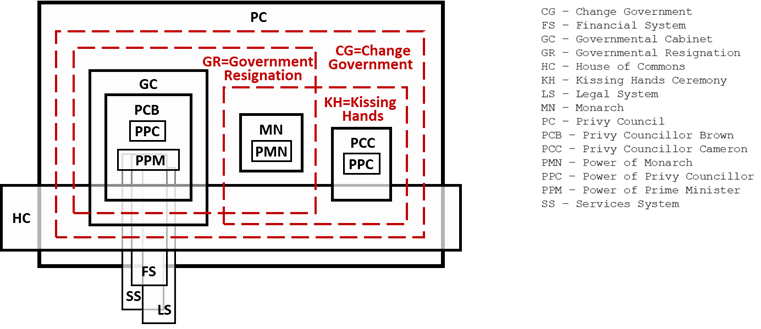
The following diagram shows these two stages of the Change Government system. The text shows the cg function, associated with the CG system, as a composition of the gr and kh functions, applied to the Government Resignation and Kissing Hands systems:
gr( { GR{ GC{ PCB{PPM,PPC} }, MN{PMN} } } ) = GR{ PCB{PPC}, GC{ }, MN{PPM,PMN} } kh( { KH{ GC{ }, MN{PPM,PMN}, PCC{PPC} } } ) = KH{ MN{PMN}, GC{PCC{PPM,PPC} } }The left-hand side, of the diagram, shows the Government Resignation system taking away, from Gordan Brown, the Government Cabinet, and the Power of Prime Minister, and temporarily (half an hour) parking them with the Monarch. The right-hand side, of the diagram, shows the Kissing Hands system, passing them on to David Cameron. After David Cameron came chaos.
We want to be able to represent the two transitions, above, using the Lambda-notation that was introduced in our notation document. Before we can do this, we need to take the transitions to a lower level of detail. The two rows, shown below, do this, using the three functions, upv, downv, and moveh (with the latter abbreviated to dnv and mvh), which were developed, in the Kissing-Hands section, of our notation document.
upv( { UPV{ GC{ PCB{PPM,PPC} }, MN{PMN} } } ) = UPV{ GC{ }, PCB{PPM,PPC}, MN{PMN} } mvh( { MVH{ PCB{PPM,PPC}, MN{PMN} } } ) = MVH{ PCB{PPC}, MN{PPM,PMN} } hence: gr { GR{ GC{ PCB{PPM,PPC} }, MN{PMN} } } ) = GR{ PCB{PPC}, GC{ }, MN{PPM.PMN} }
mvh( { MVH{ MN{PPM,PMN}, PCC{PPC} } } ) = MVH{ MN{PMN}, PCC{PPM,PPC} } dnv( { DNV{ GC{}, PCC{PPM,PPC} } } ) = DNV{ GC{ PCC{PPM,PPC} } } hence: kh( { KH{ GC{}, MN{PPM,PMN}, PCC{PPC} } } ) = KH{ MN{PMN}, GC{PCC{PPM,PPC} } }
The second row, above, reverses the process of the first row, but involves PCC, rather than PCB. We emphasise this by reversing the arrows, in the second row.
The upv, downv and moveh functions are developed as Lambda functions, in our notation document, thus completing the definition of the change government function. Hence, this example has demonstrated our use of Venn-like-diagrams and Lambda notation, to represent the dynamic behaviour of a system.
END